For millennia, the Great Pyramids of Egypt have captivated our imagination, standing as testaments to human ingenuity and architectural marvels. While we’ve long marveled at these structures, the exact methods used to build them have remained shrouded in mystery. Now, a groundbreaking study proposes a fascinating new theory about the construction of the Step Pyramid of Djoser, one of Egypt’s oldest pyramids.
Researchers suggest that the ancient Egyptians may have employed a sophisticated hydraulic lift system to raise massive stone blocks, challenging our previous understanding of their technological capabilities. This blog post delves into this intriguing new hypothesis and its potential implications for our understanding of ancient Egyptian engineering prowess.
The Step Pyramid of Djoser: A Brief History and Significance
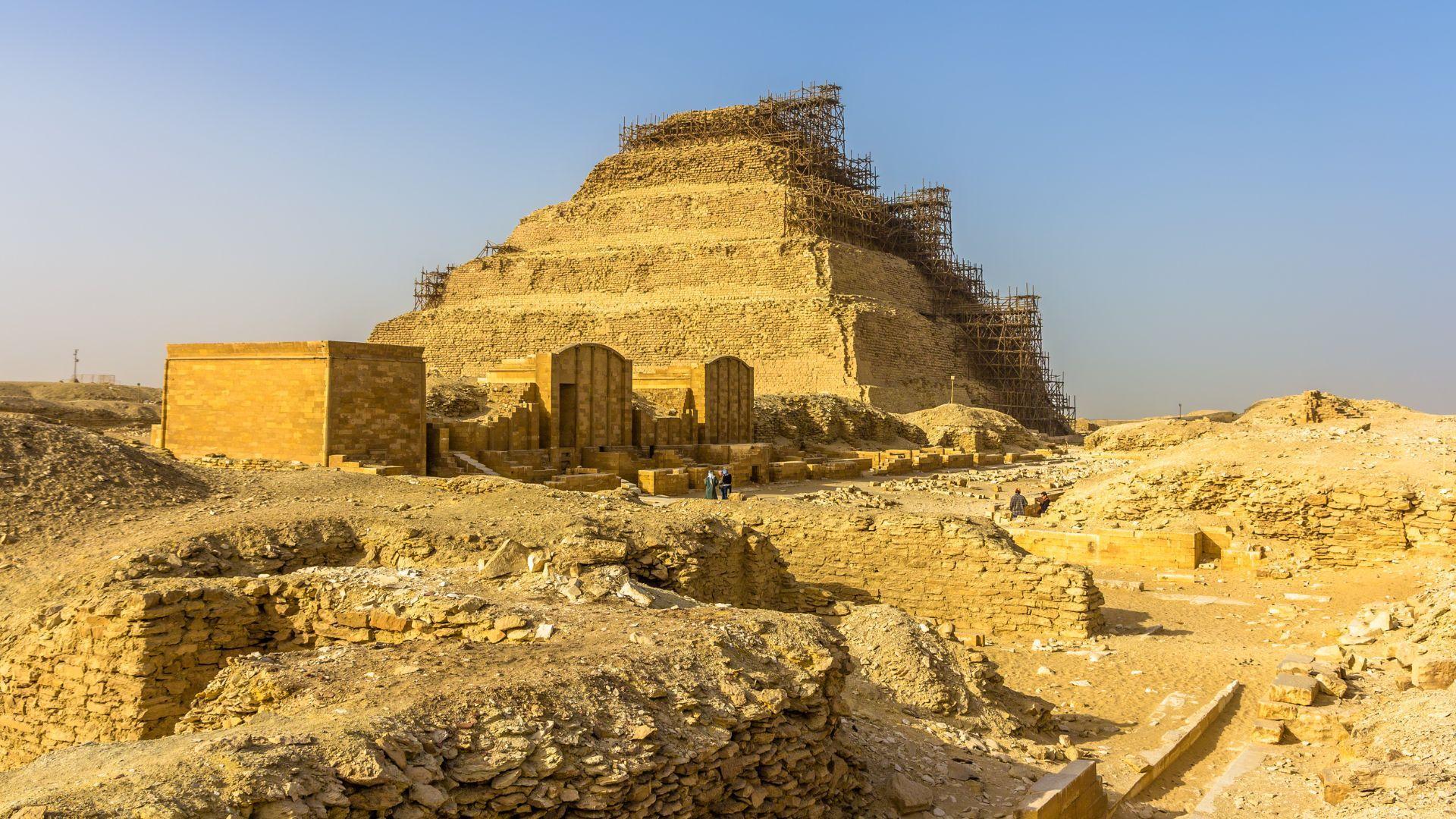
The Step Pyramid of Djoser, built around 2680 BCE, stands as a revolutionary monument in ancient Egyptian architecture. As the first pyramid ever constructed, it marked a significant shift from earlier flat-roofed tombs to the iconic pyramidal structures that would define Egypt’s Old Kingdom.
Located in Saqqara, this six-tiered structure was built as a funerary complex for Pharaoh Djoser of the Third Dynasty. Its innovative design, attributed to the legendary architect Imhotep, not only showcased the technological advancements of its time but also set the stage for the evolution of pyramid construction in ancient Egypt.
Traditional Theories vs. New Hypothesis: Comparing Construction Methods

Conventional theories on the Step Pyramid’s construction have long centered on the use of ramps and levers. These methods, while feasible, presented logistical challenges, particularly in transporting massive stone blocks to great heights.
The new hypothesis, proposed by Xavier Landreau and colleagues, introduces a hydraulic lift system as a potential solution. This theory suggests that the ancient Egyptians harnessed nearby water sources to power weight-bearing lifts within the pyramid structure itself, offering a novel perspective on how they might have overcome the engineering challenges of their time.
The Role of Water in Ancient Egyptian Engineering
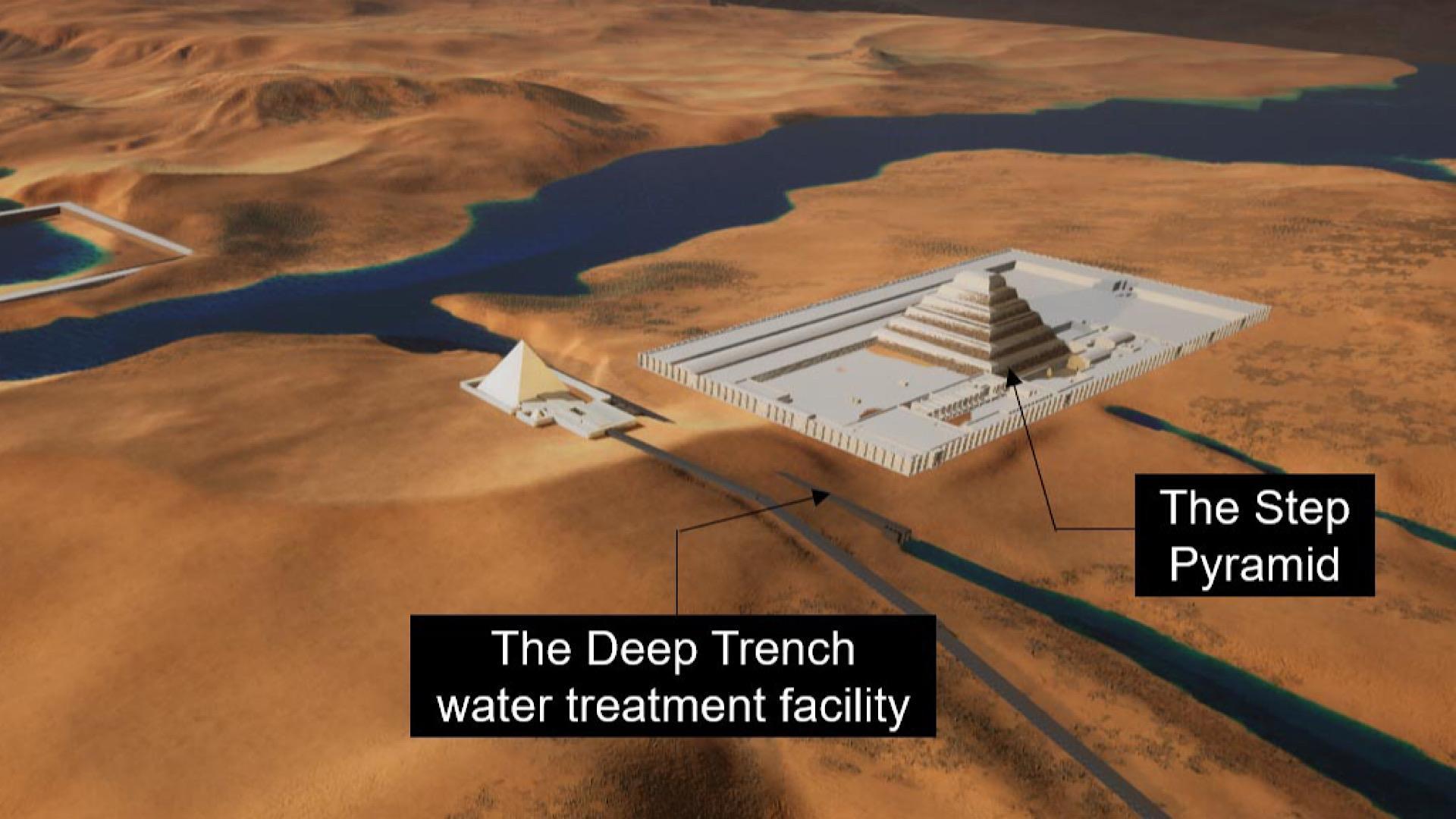
Water played a crucial role in ancient Egyptian civilization, not just for agriculture and transportation, but potentially in construction as well. The Nile’s annual floods were the lifeblood of Egyptian society, providing fertile soil for crops and serving as a vital transportation route.
This new research expands our understanding of water’s importance, suggesting that the ancient Egyptians may have ingeniously used hydraulic power in pyramid construction. By channeling water from nearby canals, they might have created a sophisticated system to lift heavy stone blocks, demonstrating an advanced grasp of hydraulic principles.
Decoding the Gisr el-Mudir Enclosure: From Mystery to “Check Dam”
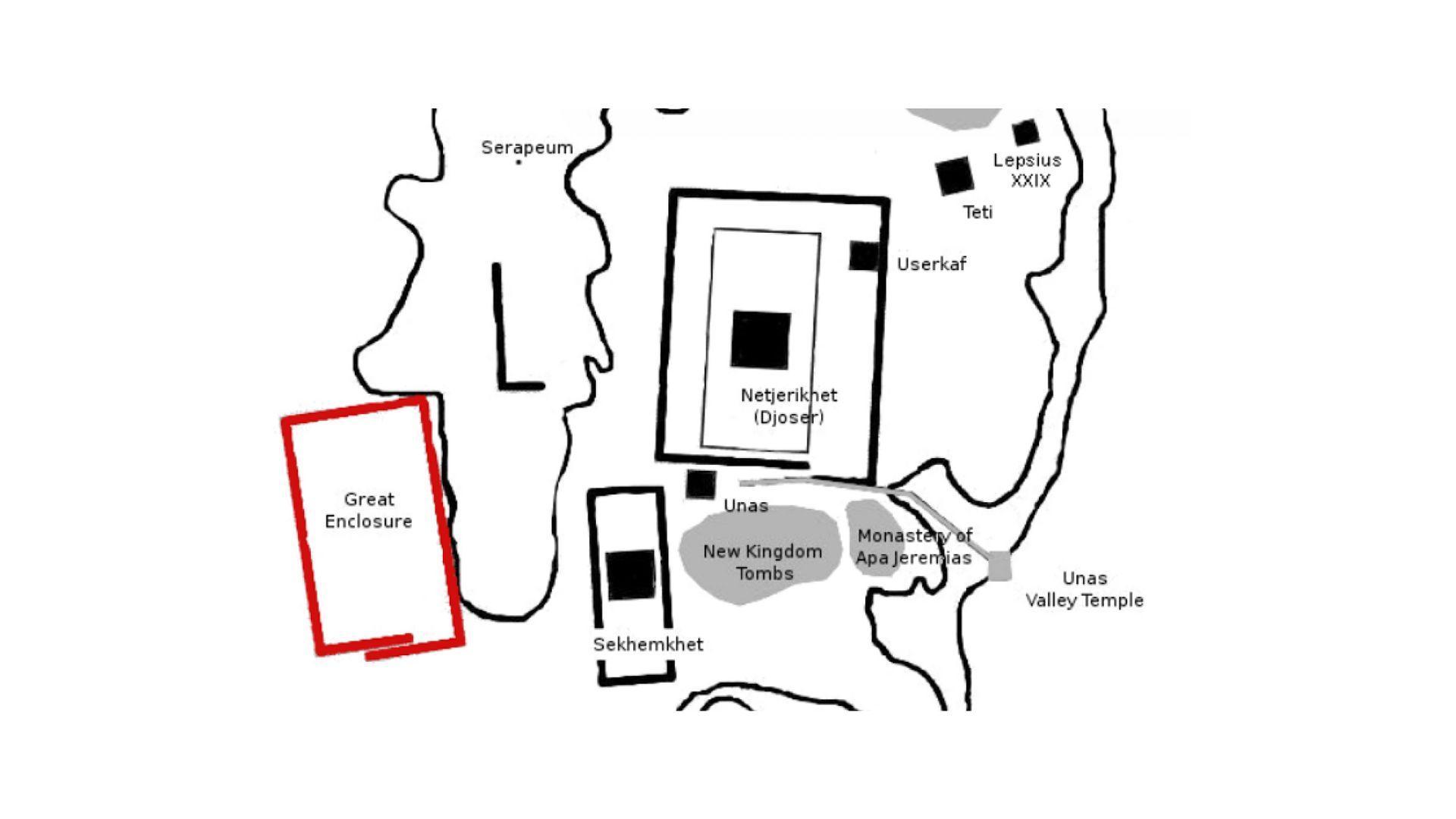
The Gisr el-Mudir enclosure, a previously unexplained structure near the Step Pyramid, has long puzzled archaeologists. Its purpose and function in relation to the pyramid complex remained unclear, adding to the site’s enigmatic nature.
Landreau’s team proposes a groundbreaking interpretation of this structure as a “check dam.” They suggest it was designed to capture water and sediment, playing a crucial role in the hypothesized hydraulic lift system. This new perspective transforms our understanding of the enclosure from a mysterious artifact to a key component of ancient Egyptian engineering.
Ancient Egyptian Hydraulics: Beyond Irrigation and Transportation
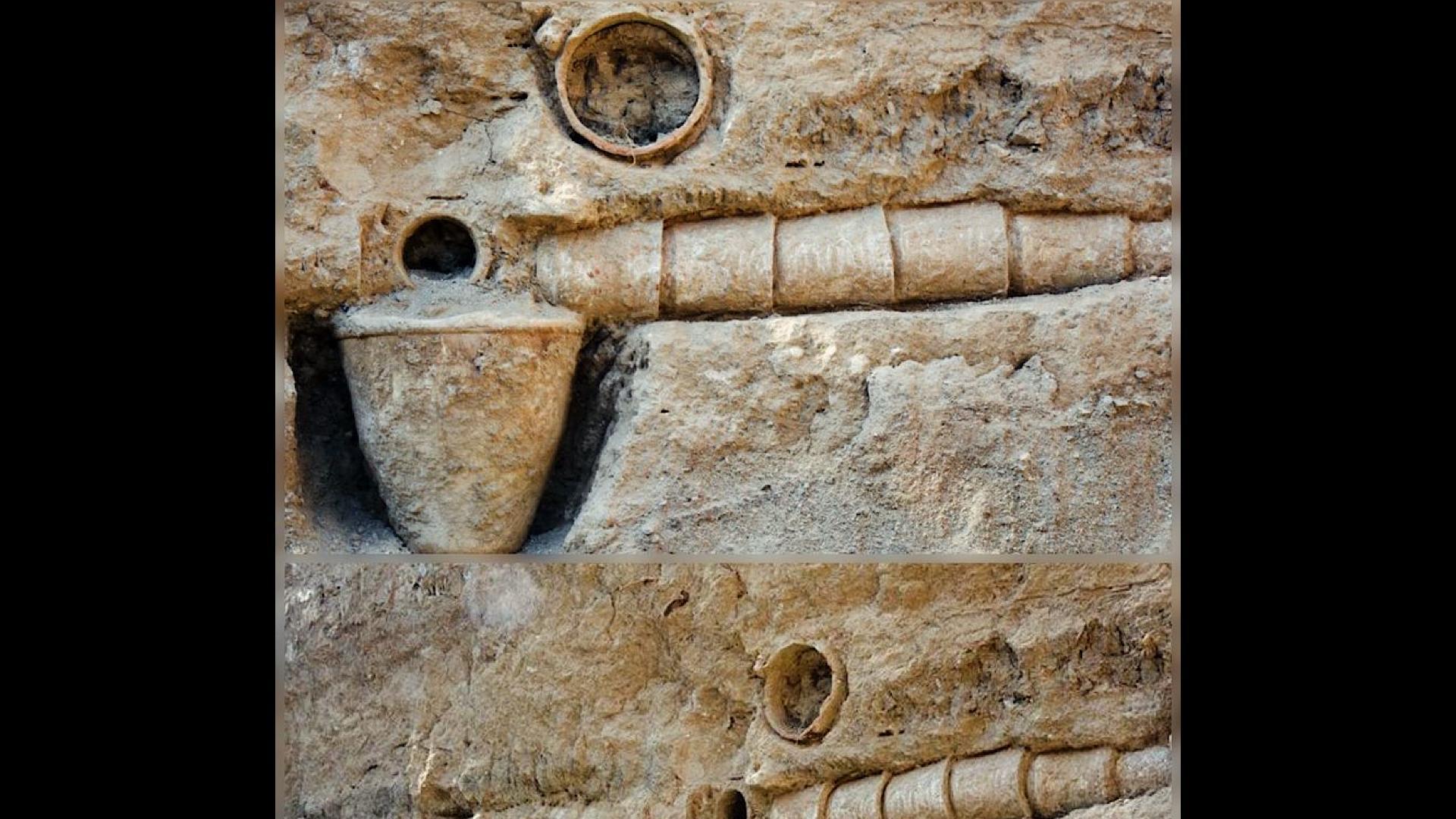
The ancient Egyptians are renowned for their mastery of hydraulics, primarily in the context of irrigation systems and the use of barges for transporting massive stones. Their ability to harness the Nile’s power for agriculture and commerce has long been recognized as a cornerstone of their civilization.
However, this new research suggests that their hydraulic expertise may have extended far beyond these known applications. The proposed use of water power in pyramid construction opens up a new line of inquiry into the extent and sophistication of ancient Egyptian hydraulic technology, potentially revolutionizing our understanding of their engineering capabilities.
The Proposed Water Treatment Facility: Engineering Ahead of Its Time
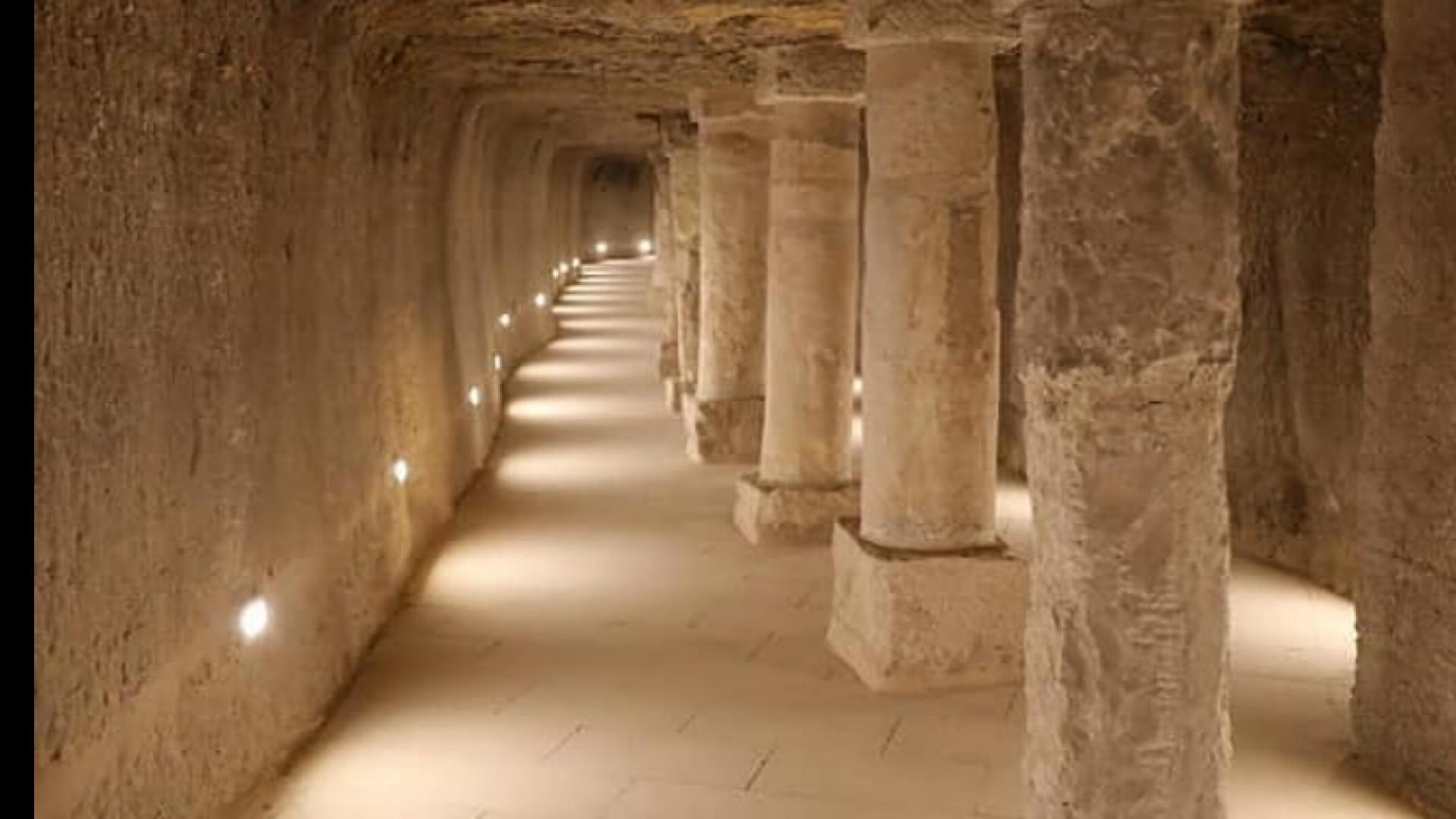
The study suggests that a series of compartments dug into the ground near the Step Pyramid may have served as a water treatment facility. This sophisticated system would have allowed sediment to settle as water passed through each compartment, ensuring clean water for the hydraulic lift system.
If confirmed, this discovery would indicate an advanced understanding of water purification techniques in ancient Egypt. It suggests that the builders were not only aware of the need for clean water in their construction process but had also developed a method to achieve it, showcasing engineering foresight that was millennia ahead of its time.
“Volcano” Construction: How a Hydraulic Lift Might Have Worked
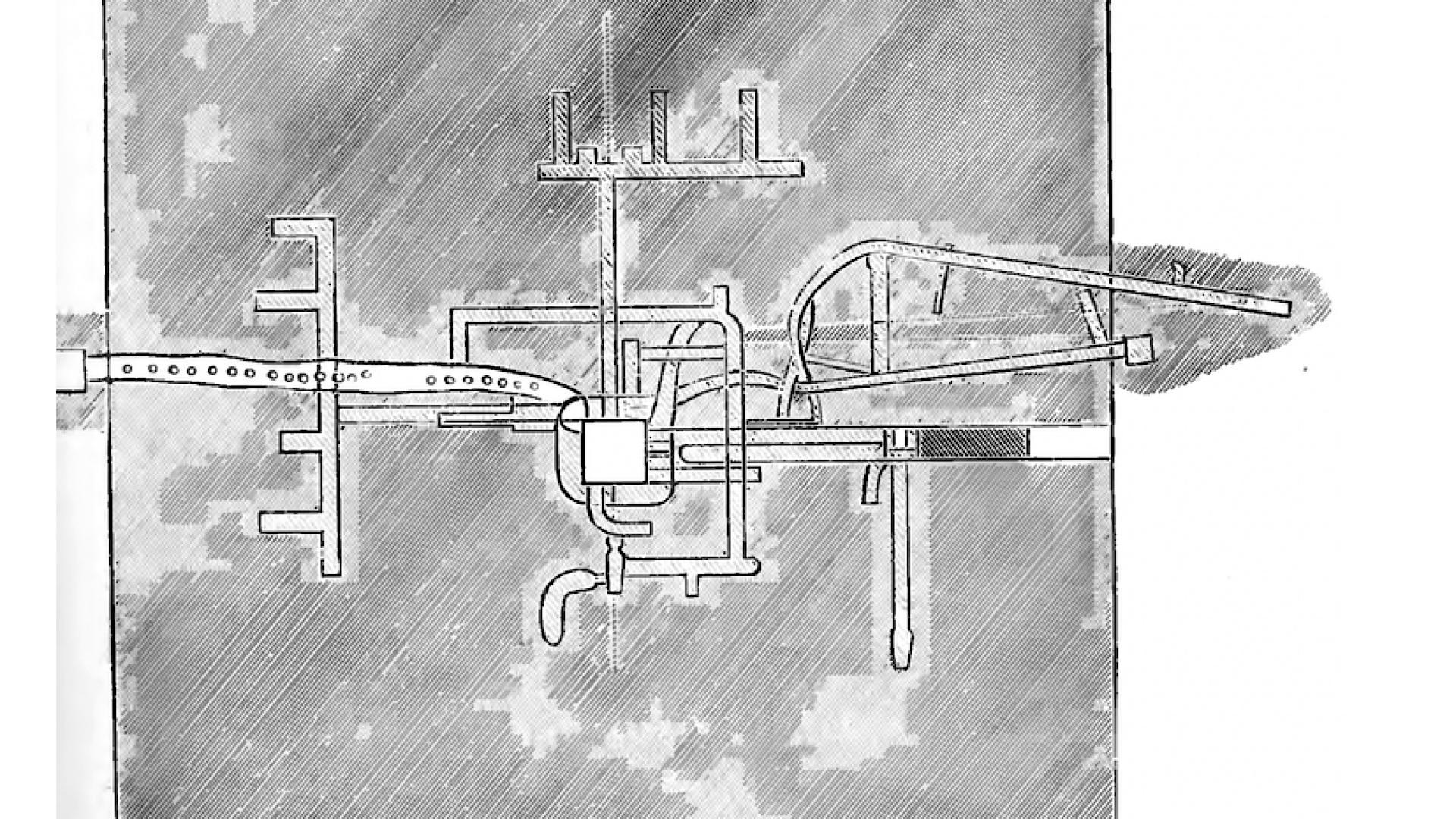
The researchers propose a “volcano” construction method, where pressurized water in the pyramid’s shafts would float building stones towards the upper levels. This process would have utilized an internal shaftway, allowing for the efficient vertical transportation of heavy stone blocks.
This innovative approach could have significantly reduced the manpower and time required for construction. By harnessing the power of water pressure, the ancient Egyptians may have overcome one of the most challenging aspects of pyramid building – lifting massive stones to great heights.
Challenges and Limitations of the Hydraulic Lift Theory
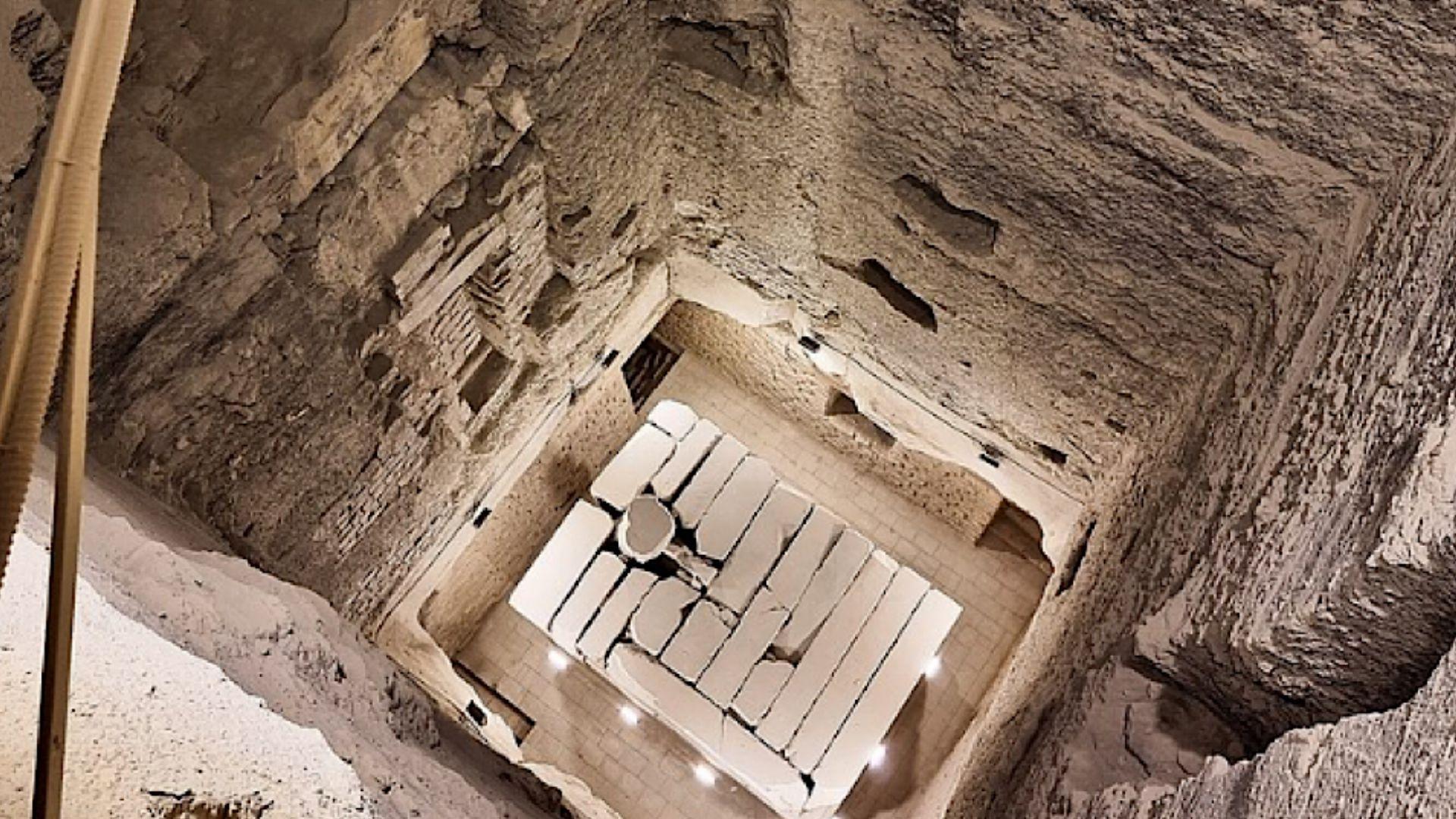
While the hydraulic lift theory offers an intriguing explanation for pyramid construction, it also faces several challenges. The researchers acknowledge that further investigations are needed to establish how water might have flowed through the shafts and to determine the availability of water in the surrounding area during that period.
Additionally, the theory must account for seasonal variations in water supply and explain how the system would have functioned during dry periods. These limitations highlight the need for continued research and potentially interdisciplinary approaches to fully validate or refine the hypothesis.
Implications for Our Understanding of Ancient Egyptian Technology
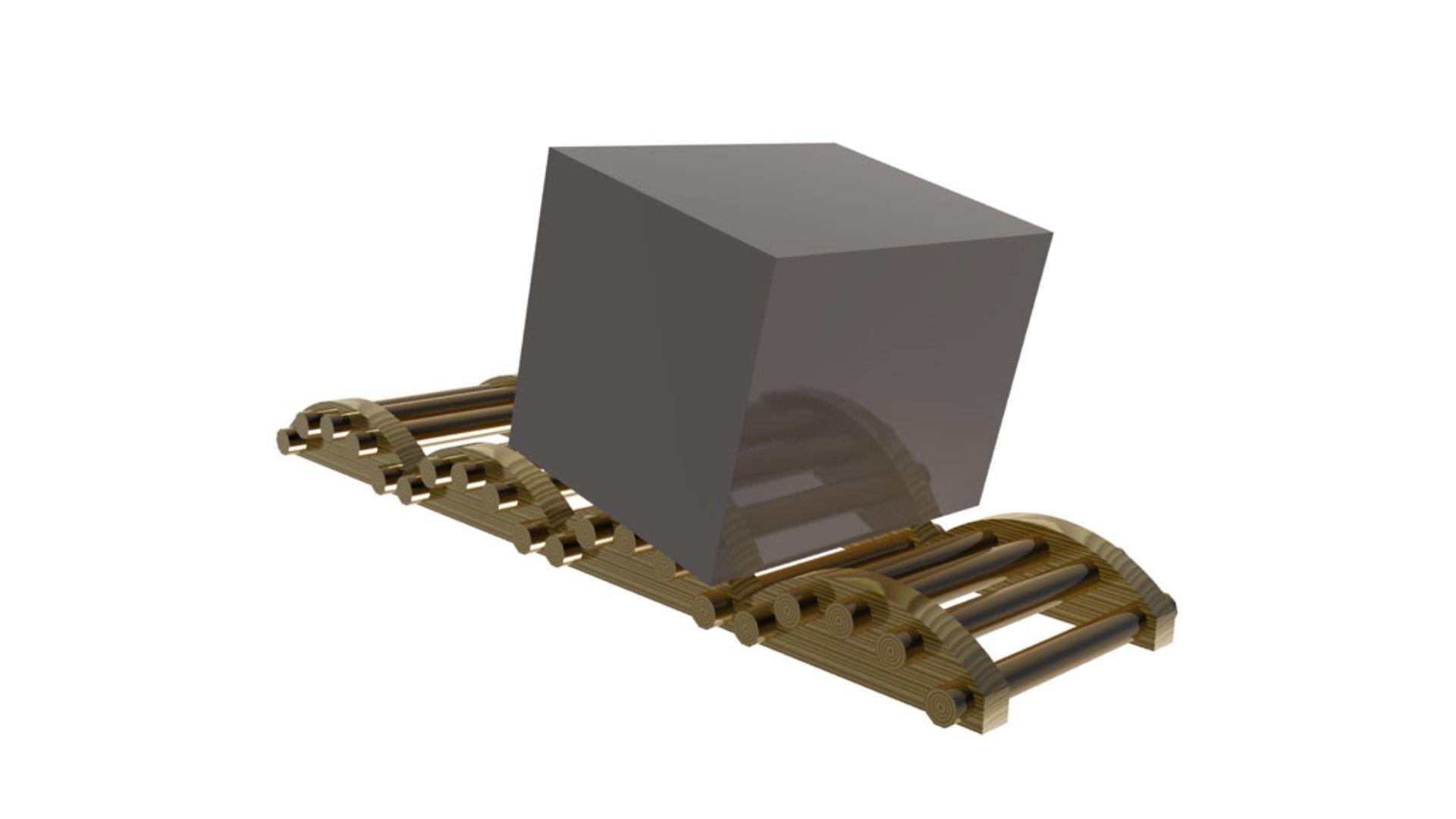
If confirmed, this theory could fundamentally alter our perception of ancient Egyptian technological capabilities. It suggests a level of hydraulic engineering far more advanced than previously thought, implying that the Egyptians possessed sophisticated knowledge of physics and fluid dynamics.
This revelation could lead to a reassessment of other ancient Egyptian structures and technologies. It may prompt researchers to look for similar hydraulic systems in other pyramids and monuments, potentially unveiling a hidden aspect of ancient Egyptian engineering that has been overlooked for millennia.
Future Research: What’s Next in Unraveling Pyramid Construction Mysteries
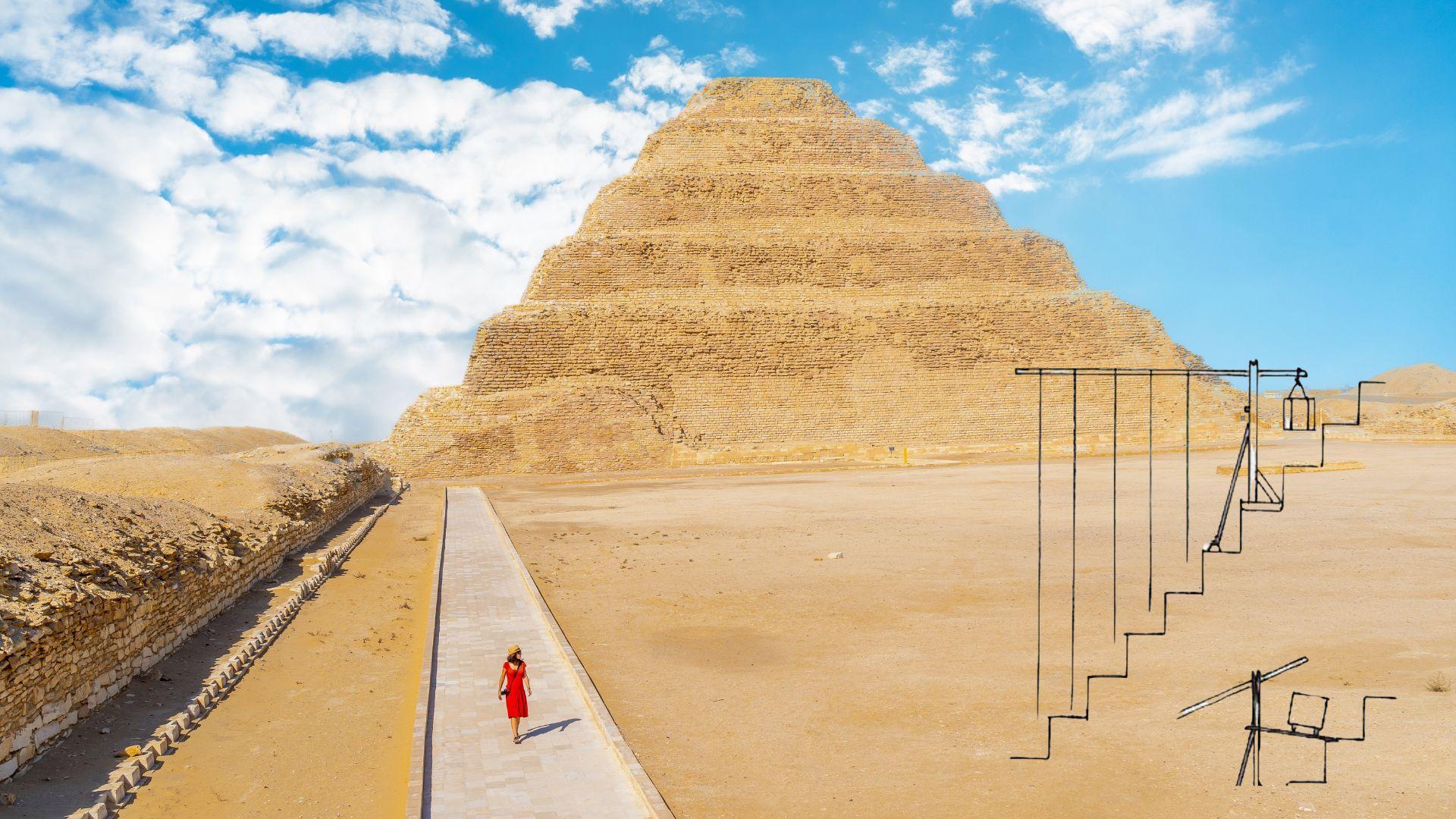
The hydraulic lift theory opens up exciting new avenues for research in Egyptology and ancient engineering. Future studies might focus on detailed analysis of the pyramid’s internal structure, using non-invasive techniques like ground-penetrating radar to search for evidence of water channels or lift mechanisms.
Additionally, experimental archaeology could play a crucial role in testing the feasibility of the proposed hydraulic system. By constructing scale models or even full-size replicas of portions of the system, researchers could gain valuable insights into its potential effectiveness and limitations, further illuminating the ingenious methods of our ancient predecessors.

